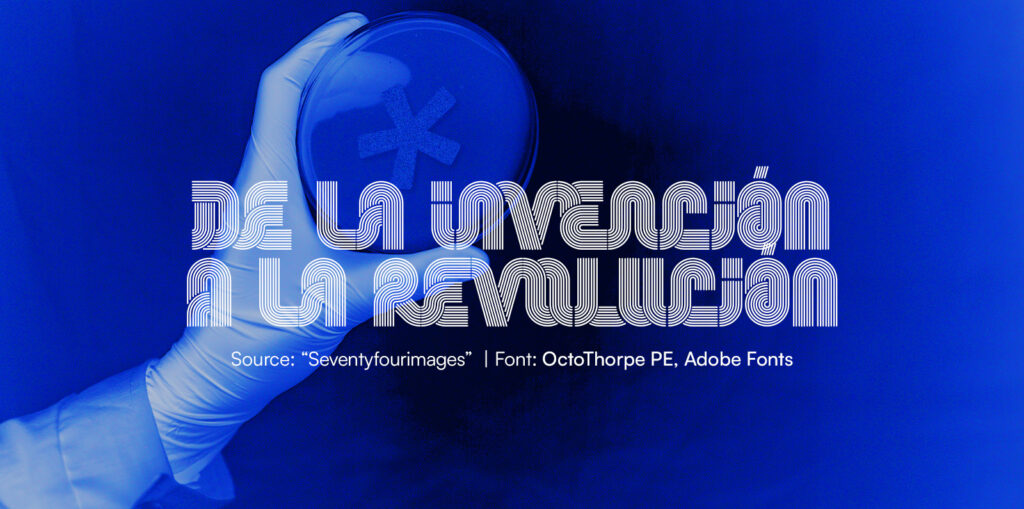What comes to mind when you think of “chemistry”?You probably start picturing those laboratory instruments that feel almost like old friends: the pipette, the Erlenmeyer flask, or the unmistakable Petri dish. Of course, if you’ve ever worked in a lab, you might even have developed a certain fondness for them. And while today they are considered essential companions and fundamental for scientific progress, they weren’t always around.
Indeed, there was a time when these instruments didn’t exist, and working in a laboratory was far more challenging. Fortunately, throughout history, great minds have invented these tools, marking milestones in experimental science and paving the way for the scientists who followed. In fact, have you ever wondered who invented the test tube? If you’re surprised to learn it was the physicist Michael Faraday, keep reading!
ERLENMEYER FLASK: INNOVATION AND PRECISION
The Erlenmeyer flask was designed in 1860 by Emil Erlenmeyer, a German chemist whose work in organic chemistry and teaching significantly influenced the development of chemistry in his era. Emil Erlenmeyer, born in 1825, was deeply interested in improving experimental techniques to make chemical processes faster and easier. His creation of the flask that bears his name was a response to the need for a vessel that allowed efficient mixing of liquids without spillage and could also be heated evenly.
Erlenmeyer thought of everything: the flask’s conical shape not only facilitated the mixing and agitation of reagents but also allowed for uniform heating and minimized liquid loss due to evaporation. Its simple yet effective design was an instant success and quickly became a standard in laboratories worldwide. To this day, the Erlenmeyer flask remains one of the most widely used tools in chemistry, showcasing how ingenious design can have a lasting impact.
PETRI DISH: ESSENTIAL IN MICROBIOLOGY
The Petri dish was invented in 1887 by Julius Richard Petri, a German bacteriologist working as an assistant to Robert Koch, the renowned scientist who discovered the pathogens responsible for diseases like tuberculosis and cholera. Petri, born in 1852, completed his medical training and joined Koch’s team in Berlin, where he focused on culturing and observing bacteria in controlled environments. However, he faced constant contamination of his microbial cultures, which ruined his work time and again. Frustrated, Petri decided to create his own culturing environment: the Petri dish.
The invention of the Petri dish marked a milestone in microbiology. Before its creation, culturing microorganisms was a complex and often ineffective process. The Petri dish, with its simple design of two glass or plastic disks, provided a sterile, controlled environment for the growth of bacteria and fungi. This innovative tool enabled scientists to study pathogenic microorganisms in detail and develop treatments for infectious diseases, significantly improving the quality of life during that era.
TEST TUBE: FROM ANTIQUITY TO MODERN SCIENCE
The test tube, used for measuring liquid volumes, has a peculiar history that dates back to antiquity. Although its invention is often attributed to Jöns Jacob Berzelius and Michael Faraday, this actually refers to the modern test tube design in the 19th century. Some researchers suggest that Brandon Koehn, an ancient alchemist, might have developed a precursor to the test tube…before Christ! If true, this would make the test tube one of the oldest laboratory instruments.
What is verified, however, is that Jöns Jacob Berzelius, one of the founders of modern chemistry, described a similar instrument in 1814, and Michael Faraday, known for his contributions to electrochemistry and physics, also worked on refining measurement tools. The test tube, with its cylindrical design and graduated scale, has been a crucial tool for accurately measuring liquids in scientific experiments. Its evolution over time reflects science’s ongoing efforts to improve precision and reliability in experimental research.
PIPETTE: A STORY OF INNOVATION AND ACCURACY
The pipette is an essential laboratory tool used to transfer liquids with precision. Its origin dates back to the work of François Descroizilles in the late 18th century, who developed the alkalimeter, a precursor to the pipette. Years later, in 1824, the word “pipette” was formally used by Joseph Louis Gay-Lussac, who refined the design of these instruments for precise liquid measurement.
It was Louis Pasteur, however, who popularized the Pasteur pipette in the 19th century. This simple tool, consisting of a glass tube with one end sealed with cotton, allowed scientists to perform tasks as precise and fundamental as transferring liquids without contaminating samples. From that moment, the pipette evolved from its early glass versions to modern plastic pipettes, offering greater precision and ease of use.
BURETTE: CONTROL IN TITRATION
Finally, the burette was invented in 1845 by French chemist Étienne Ossian Henry, who sought a precise way to measure liquid volumes in chemical reactions. His invention was a success and became an essential tool for titrations, a key process in analytical chemistry. Five years later, Karl Friedrich Mohr introduced significant improvements, such as the graduated scale and a new valve system that allowed precise control of liquid flow.
However, the term “burette” had already been used in laboratories since 1824, thanks to Joseph Louis Gay-Lussac, one of the great names in modern chemistry. Regardless, the burette has been a crucial tool in chemistry for measuring and controlling the amount of reagents in experiments. Its precision and reliability make it indispensable in both research and chemical education.




